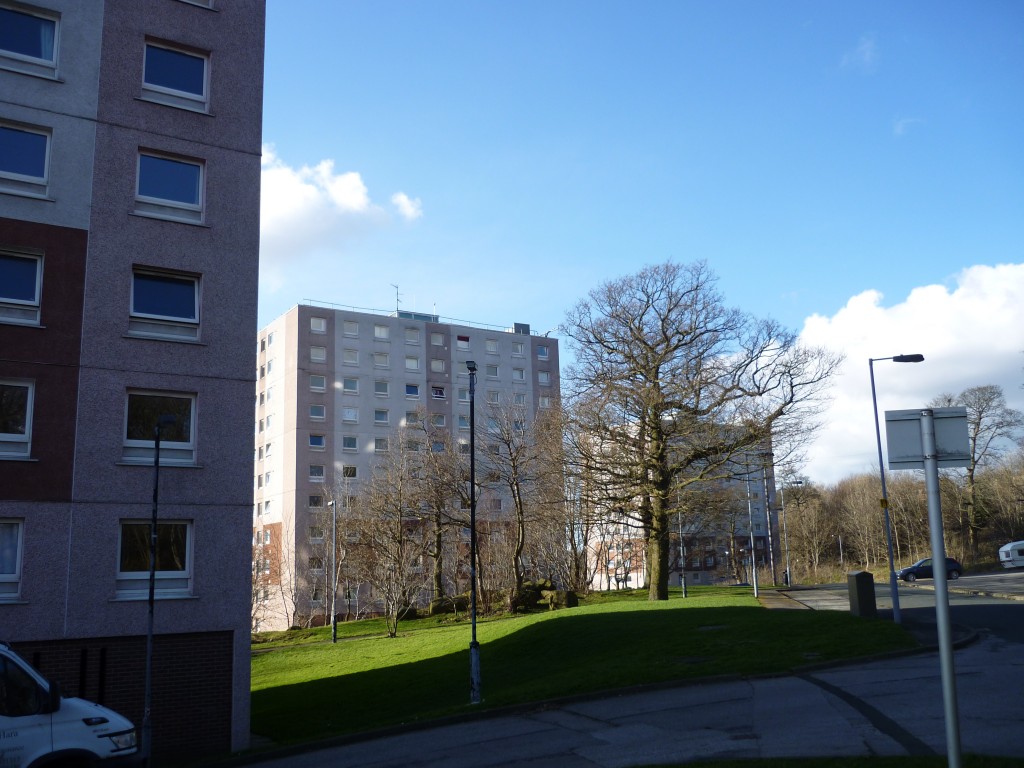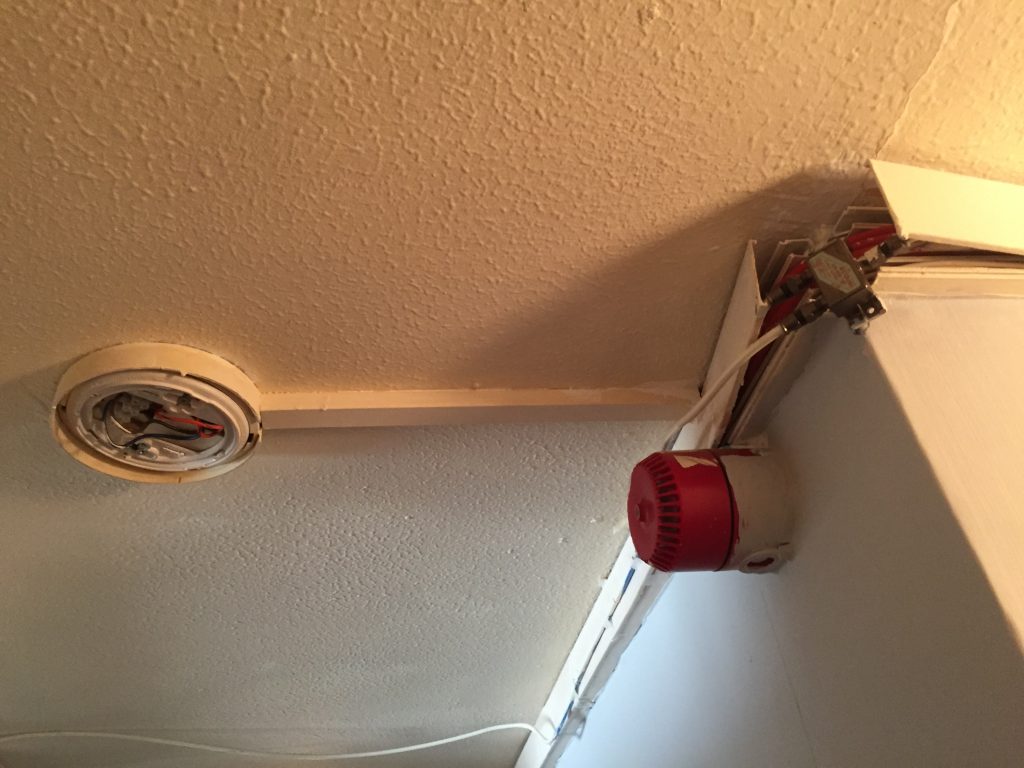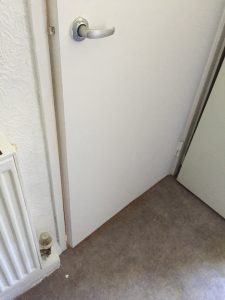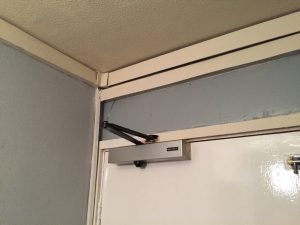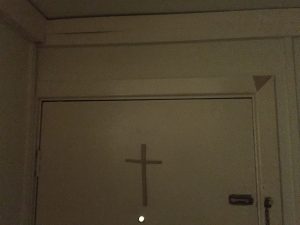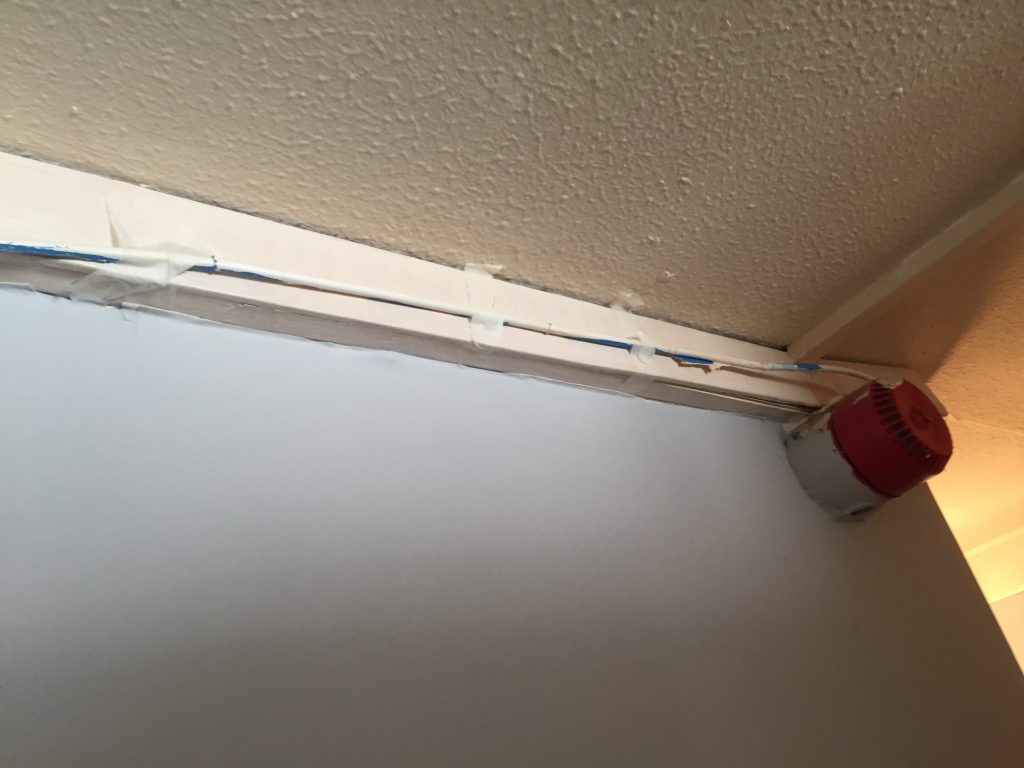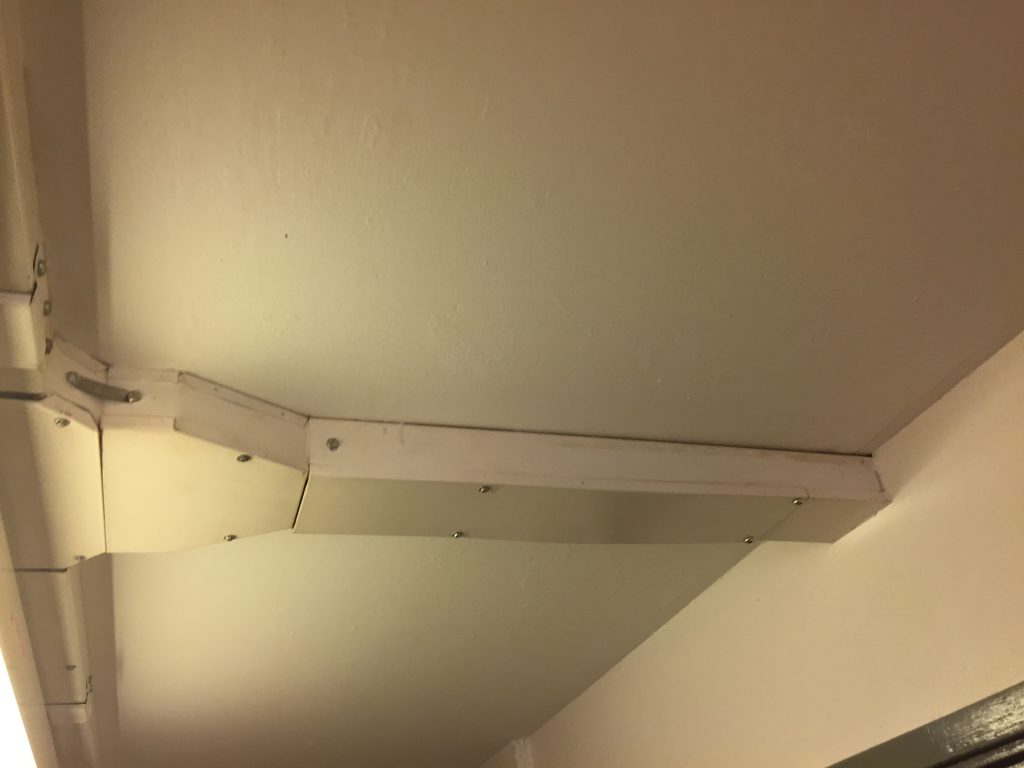Note: this is the final part of a 3-part blog reflecting on a meeting at the headquarters of Incommunities, Bradford’s main social housing provider, last Friday (11th August). The context is outlined at the beginning of Part 1.

Paul Barrett, Ruth Bartlett and Jenni M., at the Fisherman’s Inn last Thursday, before our meeting with Incommunities on Friday
3. Shared Responsibility?
As discussed in Part 2 of this blog, both Incommunities and their tenants face significant challenges in the form of housing stock that is (to fudge our language) less than ideally fit for purpose. It’s difficult to know what can be done about some of these issues without a change of policy at government level, leading to significant investment in new buildings.
Leaving aside these bigger questions, though, my next question is whether — within the parameters of what a housing association can control, and is responsible for — more might be done to mitigate the daily problems faced by tenants? Or put another way: if tenants are to be made responsible for their “lifestyle choices” (see Part 2 discussion), who is holding Incommunities to account for its management choices? Because it seems clear that their existing procedures have not always served tenants’ needs as well as might reasonably be expected.
Chapter and Verse
Take, for example, the specifics of Jenni’s case. Some of this is touched on in our film, High Rise Damp, but in preparation for Friday’s meeting, Jenni provided me with a stack of letters and documents that she’s kept as evidence since 2012, and it was newly depressing to see this all set out in black and white. Jenni has given me permission to summarise the key points briefly. I’ll mention no other names, but all of this can be backed up with documentary evidence:
- Jenni’s GP wrote on her behalf in 2010, noting her son’s coughing (since diagnosed as asthma), and asking that reasonable steps be taken to improve the family’s housing conditions given her reports of damp and mould.
- Having received no response from Incommunities (hereafter, IC), Jenni asked her GP to write again in 2012. She also went to her local councillor and parish priest, both of whom intervened on her behalf.
- These interventions led to a meeting with IC complaints’ staff at Jenni’s flat, during which a long list of necessary repairs and improvements to the flat’s fabric were discussed, all of which Jenni minuted herself. (These were all within the realms of the kind of maintenance that a tenant should reasonably expect of a landlord.) However, during this meeting, Jenni’s priest was “astonished” (his word) by the fact that the IC staff members had brought no clipboard, notebook, or any other means to record the outcomes of the meeting. His impression was that it was not being taken seriously.
- Following this meeting, there were sporadic visits to the flat from various workmen during the summer of 2012, often without appointment and completely unannounced. They made good some of the necessary repairs, but many of the other ‘agreed’ matters were left unaddressed. Moreover, some of the repairs that were carried out were done poorly and inadequately: e.g. poorly-installed damp-proofing; ill-fitting floor tiles that lifted when trodden on; a new window that leaked rain. Jenni found that her attempts to contact IC staff about these issues resulted in her calls not being returned.
- In the spring of 2013, with IC still unresponsive, Jenni tried contacting her MP, Philip Davies, about the condition of the flat. He wrote to Geraldine Howley, as IC’s Chief Executive, and this led to another meeting at the flat — this time with a member of their staff who did take careful notes about the long list of matters that needed addressing (including, for e.g., replacement of the leaking window installed only the previous year!). He shared this action list with Jenni via email, then went on holiday. And then nothing happened.
- In desperation, later that summer, Jenni wrote again to Philip Davies, who wrote again to IC, and finally some action was taken about the most pressing matter — the mould on the wall of her son’s bedroom. (Note: on the other side of this wall is a ventilation shaft serving the whole building – the temperature of which is beyond the control of this family’s “lifestyle choices”!). Thermal boarding was installed over the existing wall (as seen in our film), and new damp-proofing was added. Promises were made that IC staff would revisit with a damp-meter, in future months, to check on whether the damp had returned. But nobody ever came.
- The workmen who came in 2012 and 2013 did not provide any redecoration to parts of the flat where they had done work. For a patch of wall where they had plastered over wallpaper, the family was provided with a tin of paint and left to get on with it (ie painting over wallpaper).
- After all this, Jenni more or less gave up hope of getting anything further done. Last year, when I made our short film about her case, she described movingly on camera how she had simply felt beaten into submission.
- This year, after copies of the film and my blog link were sent to IC, Jenni finally received a visit during which a fresh damp inspection was carried out, and some further remedial work was undertaken (e.g. use of mould-resistant paint in the cupboard shown in our film). The family was then advised to follow the “lifestyle” advice discussed in Part 2 of this blog…
Jenni is grateful for this recent work, but points out that, whenever damp inspections have been carried out, it has been in the summer months – when condensation is much less of a problem than in the cold winter months. One assurance that Geraldine offered during our meeting was that a fresh inspection will be organised for the winter.
So progress is being made, and indeed Geraldine and Adrienne were keen to impress on us that there have been recent improvements to Incommunities’ service strategies which they expect will bear fruit in future months and years. They pointed to the recent Fun Day at Crosley Wood (discussed in a previous blog) as evidence of this refreshed approach. Hopefully, then, things are indeed on the up.
But we’re talking here about raising the bar from a position only inches above the floor… A tenant should not need to enlist the support of a councillor, a priest, an MP, and a university professor in order to prompt a landlord into action! The documents Jenni has kept suggest, at the very least, significant dysfunction in the procedures for logging work needed and then ensuring that it is adequately carried out. One can’t help wondering just how many residents, with less dogged determination than Jenni, have simply given up hope of trying to get things improved…
Language matters
During our meeting on Friday, Paul Barrett and I asked whether — perhaps — part of the problem here lies with Incommunities’ insistence on referring to its tenants not as tenants but as “customers“. Doesn’t such language run the risk of entrenching a culture in which the relationship between housing association and tenant is simply one of financial transaction — of paying rent in exchange for a roof over your head? Given that most social housing residents have little choice about which roof they are paying for, the consumer metaphor breaks down pretty quickly.
Put it this way: if I’ve bought something from a shop that doesn’t work properly, I will take it back and request a refund or replacement. The shop will comply, in the interests of ensuring that I return to their store next time, rather than choosing a competitor: that’s good customer service. But if something in a flat at Crosley Wood doesn’t work properly, the tenant can’t go anywhere else (unless they have the financial wherewithal to move into private rented accommodation). So there is no obvious incentive for Incommunities to do anything about the problem very quickly… other than the general moral incentive of wanting to do the right thing. Back in the days of council housing, the council was answerable to its voters, many of whom would be living in council houses. But today, housing associations are accountable only to their regulator — the same regulator that demands all costs to be passed directly to the tenant, thereby inflating the price of some flats above their market value… (see Part 2) For all these reasons, the “customer” label seems less than apt for social housing tenants.
[In response to the paragraph above, Adrienne Reid comments in email: “Housing association customers have access to a three stage internal complaints process, the last stage of which is a customer (tenant) panel. After this they can progress to the independent housing association ombudsman as a right. Additionally, councillors still send in enquiries. All of these mechanisms are free.” I’ve no doubt this is all true, but this internal complaints process seems less than transparent to “customers”: having trawled Incommunities’ website for mention of it, I’ve found only an inward-facing policy document and a generic online form that invites “compliments, comments and complaints“.]
The use of the term “customer” also seems to individualise tenants as consumers, and so militate against any sense that Crosley Wood is a community — where landlord and residents need to try to work together collaboratively to improve the social dynamics for everyone. During our meeting, I pointed out that Yorkshire Water, in part responding to a challenge from one of my colleagues on the HydroCitizenship research project, has begun actively using the term citizens in preference to customers — in recognition of their desire for a more productive, two-way relationship. For example, rather than simply selling units of water to us as customers, Yorkshire Water wants us to participate actively in mutually beneficial behaviour: see, for example, one pilot project that has involved Bradford ‘citizens’ collecting used cooking fat in plastic tubs for YW to use as bio-fuel. (This ensures that the fat is not poured down kitchen sinks — thereby clogging up drains and exacerbating flood risk…)
Presented with these various points, Geraldine and Adrienne nonetheless defended the use of the term “customers” on the grounds that it is used to denote all the people that Incommunities deal with: the term extends beyond just their tenants. Moreover, they suggested, some have seen the “tenant/landlord” relationship as stigmatising and/or hierarchical, whereas the term “customers” implies a need to provide “service”. It’s an interesting argument, but not one I’m personally persuaded by. As we’ve seen above in Jenni’s case, “customer service” at Crosley Wood has at times been abominable. And as the tenant of a private landlord myself (those words are in my contract), I have never felt stigmatised…
Oppositional dynamics?
Where stigma lies, I think, is in the attitudes and assumptions that are often held about social housing tenants (attitudes that have often been exacerbated by the popular media and by political rhetoric about “skivers versus strivers”, etc.). And indeed, there’s no point denying that an estate like Crosley Wood does house a number of tenants whose disadvantaged lives have led to mental health issues, or substance abuse problems, or who have been guilty of anti-social behaviour, and so on. I can imagine that working for Incommunities must sometimes be very difficult, if you’re dealing with people with complex needs, or when you get a faceful of grief from someone who is angry about their living conditions, or about the neighbours who have been put in next door to them, or a hundred other things. It might be very easy, after you’ve been in a few such confrontational situations, to start imagining that every tenant is a “problem case” of some sort. Even when they are not. And thus a vicious circle keeps turning — because if staff become habitually defensive or confrontational, this will naturally exacerbate the frustration of tenants.
There was a telling moment, during our meeting on Friday, when this “oppositional” dynamic came into focus quite sharply. Incommunities recently held a “fire safety surgery” at Crosley Wood, which was intended (in the wake of the Grenfell tower fire in London) to try to reassure and inform residents about their own situation. Anticipating that there would be lots of demand for discussion, Incommunities sent a sizeable team of seven or eight staff members to this event — only to discover that they outnumbered the residents who attended. But as Jenni explained, the large turn-out was perceived by residents as Incommunities coming in mob-handed. She felt that this had prompted a some people to stay away from the meeting — perhaps feeling that they would simply be fobbed off with pat explanations. That kind of distrust and suspicion is perhaps understandable given the track record of poor service that many residents have experienced. And yet it’s equally easy to see why, from an Incommunities point of view, this low turn-out might be perceived as a show of apathy towards a constructive attempt at dialogue… And so the cycle of misunderstanding continues.
Community “resilience”?
Similar problems were apparent at another recent meeting was hosted by Incommunities at Crosley Wood, during which an attempt was made to formalise the residents’ use of the portacabin community centre next to Peel House. The locks on the cabin had been changed in advance of the meeting, and residents were then invited to a meeting to discuss constituting a new committee with keyholders (and a chairman, secretary, treasurer…). These moves were intended to be consistent with the housing association’s recent attempts to improve neighbourhood relations, by creating more of a sense of structure and legitimacy for the use of this shared space. But from the residents’ point of view, they had just been locked out of the one shared space they had on the estate, which had been in use for sharing group meals etc. Being asked back in again on new terms was inevitably read, by some, as passive-aggressive…
Paul Barrett, from Shipley’s Kirkgate Centre, was in attendance at the portacabin meeting, and he pointed out during our meeting with Geraldine and Adrienne that — from his point of view as a community development specialist — the move towards a constituted residents’ committee was premature. It also imposed an undue burden of responsibility on those few residents who had turned up to the meeting, and were thus placed in keyholder roles. Adrienne responded by acknowledging that Incommunities are a housing provider, not community development experts, and that mistakes might have been made here. She then explained that Incommunities is currently developing a “partnership network” scheme, whereby community centres such as Kirkgate Centre will be approached to help advise on community development strategies, and to develop better collaborative working — towards new initiatives that might enhance community and individual “resilience” in the face of often difficult circumstances.
All of that sounds positive, and I hope that Adrienne’s conversation with Paul, especially, will develop further. But I’m also hesitant about that word “resilience“. Maybe I shouldn’t get stuck on words, but I’m an academic after all — and there’s a whole critical literature about the risks of the term resilience being used as a means to further privatise social problems. Too often, when this word is invoked, the unspoken subtext reads something like this: “it is in no way our responsibility to try to address or rectify manifest social inequalities and injustices, it is simply the individual’s responsibility to make themselves more resilient to their crap circumstances”. Similarly, the danger with a “partnership network” of the sort Adrienne described might simply be that the housing association further absolves itself of responsibility for its tenants’ well-being by sub-contracting the question out to community centres…
I should stress that I do not think that this is what Adrienne intends by this initiative. My impression was that she was listening carefully to what Paul, in particular, had to say, and that she was genuinely interested to further the conversation beyond this particular meeting. Perhaps there are, indeed, ways to share complementary knowledge bases, and to open up dialogues that can overcome ingrained, oppositional suspiciousness of the sort I described above. In short, perhaps there are ways for us all to take shared responsibility for improving the situation, rather than simply passing the buck or blaming other people.
Shared responsibility is important, after all. To take an example from another set of issues that I’ve tackled elsewhere on this blog — flood risk management — the fact is that individual house-holders at flood risk do need to improve their personal resilience to such threats. There’s no point in expecting the government, or anybody else, to march in and make all the necessary alterations to your home that would minimise the danger of flood damage (how many of us would want the government marching in?!), so you have to take some responsibility yourself. To do your part. (And in Jenni, we see someone more than willing to do her part: she lives eight floors up, well out of reach of the River Aire, but at the start of our film, she describes her own response to the 2015 Boxing Day flood, on behalf of other people…) But such individual citizens’ responses need to be mirrored and complemented by the responses taken by statutory and voluntary organisations — be they local councils, housing associations, community centres, or whomever. We all of us need to listen, and learn, and gain new perspectives on the issues at hand.
To conclude, then: at the risk of over-stating my problem with that word “customers”, I would suggest that the marketisation of social housing has had negative impacts on residents and providers alike, by imposing an artificial dynamic of supply and demand… But this housing provider is called Incommunities, not Insupermarkets, and it seems to me that listening, learning and working together is surely the only way in which to improve community relations, and with them, the relationships between landlords and residents.
*
My thanks, again, to Geraldine Howley and Adrienne Reid for taking the time to speak with us in such a full and constructive way. Responsibility for any inaccuracies or misunderstandings in these blog texts is entirely my own.

